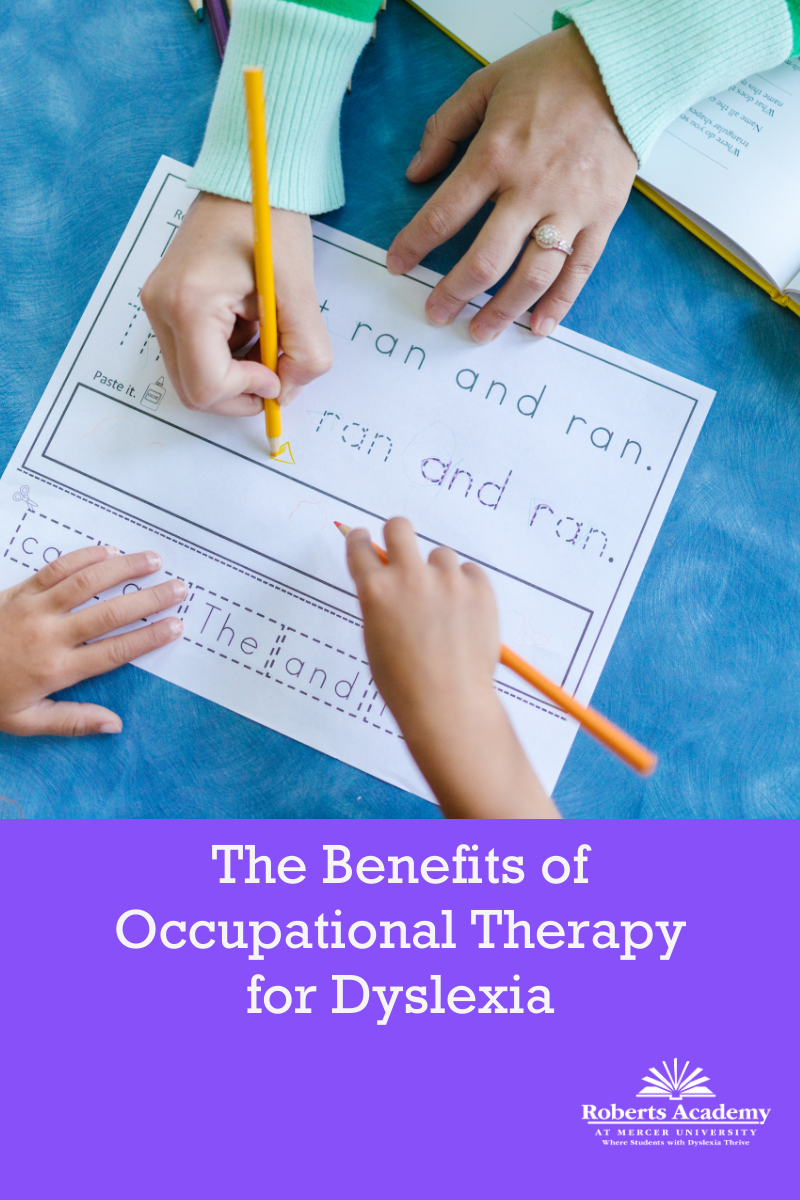Occupational therapy and dyslexia often go hand-in-hand. This evidence-based practice can help both students and teachers identify challenges in the classroom and develop customized solutions to help the student succeed in and out of school.
But what exactly is occupational therapy, and what strategies do practitioners use to help students with dyslexia?
Allison Hakwins is a Macon, Georgia-based occupational therapist with more than 17 years of experience.
In today’s post, she’ll answer questions about occupational therapy and how it can help students with dyslexia.

Allison is currently employed at the Georgia Academy for the Blind, but her professional journey also includes valuable experience in the outpatient pediatric department at Atrium Health Navicent. There, she specializes in assisting children facing sensory processing challenges and learning differences.
Throughout her career, Allison has consistently demonstrated a fervent commitment to comprehensively assessing children and understanding the interplay between sensory processing, learning, and skill development.
Allison Hawkins (AW):
Generally speaking, occupational therapists help individuals accomplish the occupations (daily tasks, routines, and activities) that bring a sense of meaning to their lives. In the pediatric realm, those “occupations” are typically school and play.
Occupational therapists support individuals in countless ways, but in the school setting, OTs are focused on supporting the student’s overall ability to successfully participate in the school environment.
For a dyslexic learner, this could entail supporting fine motor functioning; sensory processing; visual motor and visual perceptual skills; self-care skills/activities of daily living; social skills; cognitive skills and executive functioning; and more!
AW: OT can support the needs of a dyslexic student by identifying and meeting them where they are in their learning environment.
This could include helping to identify helpful sensory strategies in the classroom; supporting fine motor skills through individualized activities; identifying visual motor challenges based on specific learning tasks; and supporting the educational team.
AW: We know that dyslexic learners process incoming sensory information differently.
OT’s can help support them with their own awareness of their unique sensory challenges.
Self-awareness of sensory strengths and weaknesses is extremely powerful for dyslexic learners. It helps them understand why they respond or don’t respond a certain way to various stimuli. Self-awareness is an important building block for gaining confidence in their learning journey.
AW: Collaboration is key for any educational team to support a student well.
Occupational therapists can provide helpful insights for classroom set up based on sensory needs. OTs can also assist the educational team with understanding the importance of pairing and sequencing sensory activities with specific learning tasks in order to support engagement and regulation.
OT’s can also help develop powerful learning routines to help classroom staff reinforce learning concepts based on individual needs.
AW: OT’s can support reading through recommending kinesthetic learning, rooted in the student gaining awareness of spatial concepts as it’s related to their own bodies.
Those same spatial concepts can help support reading concepts. Writing can be supported through fine motor programming, as well as recommending specific tools to support fine motor or visual motor weaknesses, such as a slant board, different writing tools, etc.
AW: OT’s can be an integral part of helping students build confidence by helping them gain self-awareness of how they learn best. With self-awareness comes self-determination, which is a crucial step in the journey to confidence. This is how they begin to understand their superpowers.
AW: Sensory Integration is a term that describes the brain’s ability to take in information from the senses, organize it, and respond to it during experiences of daily life.
It is a process that helps mature the brain and physical body.
Every individual has a unique sensory system. It is common for dyslexic learners to have sensory processing differences or require specific sensory supports.
The key to supporting a dyslexic learner well is by having a deep understanding of their sensory systems and how to support their learning based on their individualized needs.
Sensory integration is a foundational building block for learning.
AW: OT sessions are tailored to each student based individual needs learned from classroom observation, discussion with the educational team, and direct OT assessments.
AW: We commonly hear the benefits of early invention across education. This is no different with OT interventions. An OT trained to assess and support students with learning differences can be crucial for educational programming and student success.
AW: Parents can support OT related goals through gaining a deeper understanding of their child’s sensory system and how they can support those needs at home. This can also be supported through individualized routines and activities for the home environment.
At Roberts Academy we recognize the significance of occupational therapy in supporting dyslexic learners. Therefore, we are pleased to offer OT services to Academy students.
The Academy is currently accepting applications; visit www.robertsacademy/admissions to learn more about the admissions process.
Roberts Academy is now accepting applications for enrollment. Classes will begin in August 2024.